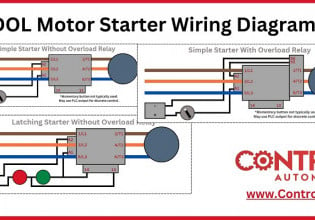Root Cause Analysis in Manufacturing: How Does it Work?
Root cause analysis (RCA) is a method used to identify the root of specific problems. Below are the steps necessary to complete RCA.
The priority of the maintenance and production department is to identify and move any fault in a system. It is possible that specific problems can reoccur if the root cause of the problem is not determined.

Preparing machine for work in a pharmaceutical facility.
The RCA's sole objective is to establish an environment that focuses on the cause of the problem. As a result, the output is the methods and procedures that help improve the equipment or system's overall performance.
It accomplishes a series of steps that fulfill the theme of the Root Cause Analysis. Every organization can use its own strategy, but generally, Root Cause Analysis involves the following steps:
Data Collection
The success of any Root Cause Analysis depends on accurate data collection. More importantly, the data collection should be performed promptly to avoid any data loss.
Below are some types of data that can be collected:
- Identification of the incident
- Factors or personnel involved
- Condition before and after the incident
- Any data from sensors or instruments installed indicating critical data
- Origin of the problem
Establishing Hypothesis
In this step, assessments can be made based on the data collected. Data is thoroughly studied at this point in the process, and if necessary, help from respective experts is taken. The following steps can be involved in establishing a hypothesis.
- Identifying the problem
- Degree of consequences and its effect
- Situation before and after the problem
- Series of actions resulting in the occurrence of the problem
- Any related environmental condition
Establishing Root Causes
- While considering the data collected, the next step is to brainstorm the possible causes of the problem. Consider these questions.
- Why did the problem exist?
- Is there any negligence of the persons involved?
- Is the system itself responsible?
- What are the barriers that lead to the occurrence of the problem?
Recommendation of Corrective Actions
This involves the establishment of the corrective actions required to prevent the problem from occurring again. You can implement these following recommendations:
- Change in standard operating procedures
- Development of safety systems or any update required
- Training of the personnel involved
- Monitoring procedures
Documentation
During the process of conducting Root Cause Analysis, it is essential to document the data and observations found properly. This includes recording problems and corrective action.
Monitoring and Evaluation
Proper monitoring is necessary to make the Root Cause Analysis useful. Monitoring ensures that the concerned department or personnel are following the recommendations. It also helps to determine the following:
- If the corrective actions help avoid the cause
- Are according to actual needs
- Any review or change required in these disciplinary actions
- The suggested solutions are correctly implemented
- Who Performs the Analysis?
The team performing the Root Cause Analysis should have some basic knowledge of the process and the regulatory equipment needed to complete this. Otherwise, this will result in unrealistic observations and solutions that could be impractical to implement.

An example of a root cause analysis form. Image courtesy of Microsoft.
The team should consist of several people, including the department or section in which the problem occurred. The team should have in-depth knowledge of specific industry standards as well. One of the team members should be leading the RCA. This person is responsible for implementing the agreed-upon solution.
Root Cause Analysis and New Techniques
The industrial sector has witnessed first-hand the advancement in the technologies, increasing the productivity of a process. However, the Root Cause Analysis has retained its importance.
Predictive maintenance has dramatically improved the machine operation by predicting breakdown in advance, but this technique cannot give the cause of the fault. By effectively using Root Cause Analysis with these advanced techniques, the breakdown can be more effectively managed.
RCA can be more effective than previously thought because of the large amount of available data from new technology advancements and innovation. The algorithm used by these new technologies can be used to perform Root Cause Analysis.
Some of the advantages of using Root Cause Analysis with the new technology are:
- The lesser amount of persons involved
- The activity takes less amount of time
- More detailed causes of the problem can be obtained
- Increases productivity
Case Study - Personal Experience
There was a complaint of an empty pocket in a blister of a pharmaceutical product. The blister packing machine, which was used to pack tablets, is equipped with the inspection system. The inspection system was used to detect any abnormality in the packs, like an empty pocket, broken tablet, or half-filled pocket.
Initially, it was suspected that the inspection system was not working correctly, but repetitive tests proved no problem with the inspection system. A team representing electrical, mechanical, and lead engineers was given a task to find the cause of the empty pockets.
The signals from the camera circuit were found to be working correctly. The wiring was adequate, and the rejection system was receiving the signals that responded to the system at the correct timing.
When the mechanical representative started analyzing it, they found that there was a leakage in the cylinder. Upon further analysis, it was found that there was leakage from the seal of the cylinder, resulting in malfunctioning the rejection system. Once we replaced the seal, the problem was solved.
By following these steps, hopefully, you will be able to identify and correct any issues you may be having in your process.






